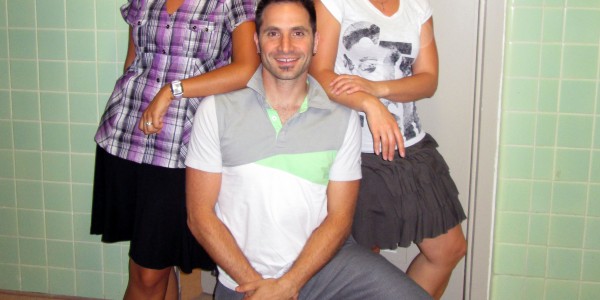Responding to patients’ needs
As the first member of VCH’s new Quick Response Team (QRT), home care nurse Jessica Stobbe remembers her first patient clearly.
“She was an 85-year-old woman who had congestive heart failure as well as hypertension and respiratory issues,” Jessica recalls. “I helped her sort out her medications and worked closely with her doctor and a nurse at the Heart Failure clinic at VGH. I reviewed her diet, and reviewed how to take her medications properly – this is all in order to prevent her symptoms from flaring. These symptoms are preventable, and could lead her back to the hospital.”
Consistent with our Home is Best philosophy, QRT helps patients resume their lives at home safely, better informed and with the supports they need.
Launched in May, the QRT aims to reduce the number of expensive readmissions to the hospital. Not only does the team see the client in hospital prior to discharge, but the three-member QRT visits patients within 48 hours after they’ve been discharged. Their goal: to ensure clients understand their medications and can manage chronic illnesses at home. Follow-up can continue for a flexible 10 days, making sure the client has all he or she needs to remain at home.
“Evidence has shown that early health professional follow up at home and connection to primary care following an acute-care discharge can prevent unnecessary readmissions to the hospital,” says Janice Lochbaum, director of Home Health at VCH. “It can make sure patients and families have the supports and information that they need to remain safely at home.”
Team effort
The team also consists of an occupational therapist, Dave Robens and another home care nurse, Crystal Koebel. Involving the patient’s general practitioner, the team focuses on educating the patient about their chronic issues and on helping them manage their medications and daily function; three areas for which people return to hospital.
“We all work really well together” and we’ve definitely made a positive difference,” Jessica says, “And we have the great opportunity to work closely with the client’s physician in order to ensure our clients avoid hospital readmission.”
“There are many preventive measures clients could be performing to manage their symptoms and which would prevent them from returning to the hospital,” she explains later. “We see people with high readmission rate scores being discharged from the hospital, and we intervene quickly.”
Jessica says her first patient was clearly appreciative of the visit.
“She told me she was grateful for the explanations I gave her about her medications and she was reassured. She knows what to do or who to talk to when her symptoms appear so that she doesn’t have to go back to VGH – that’s exactly what we want to do.”

